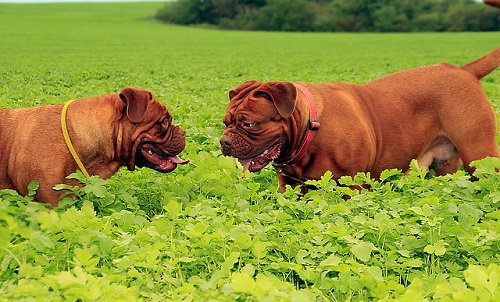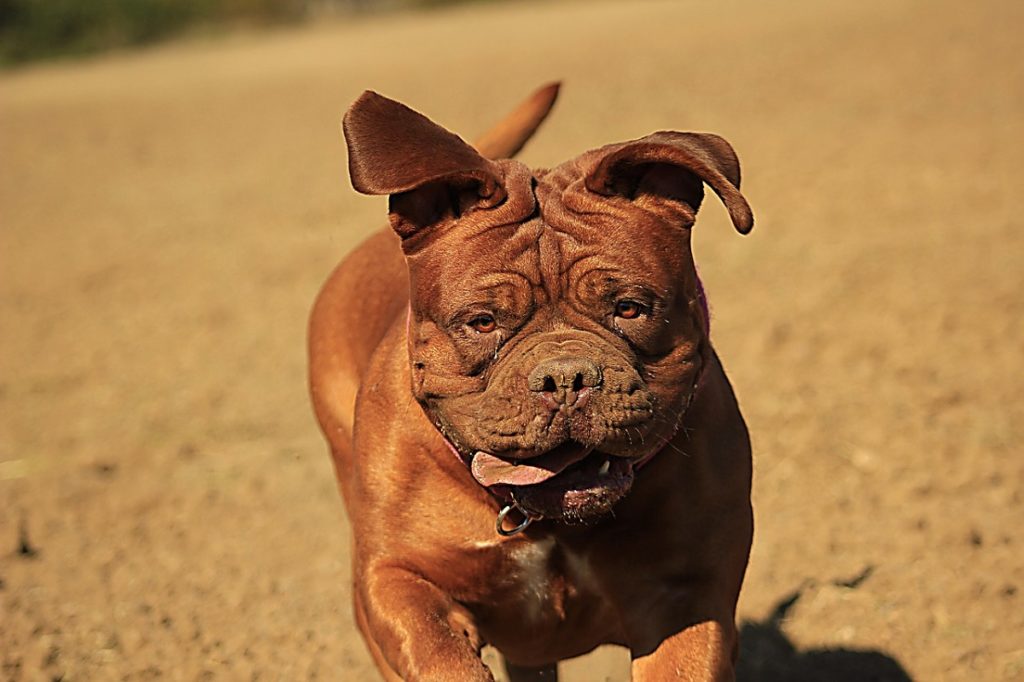Mastiffs are a large and majestic breed and are one of the oldest breeds known to humans. They have been used as guard dogs, war dogs, and fighting dogs throughout the ages but today many dogs from the mastiff family reside as pets in the homes of their owners though they still take the protection of their humans seriously. As a beloved member of the family, many mastiff owners may find themselves wondering how long their furry friend will be around. While a number of factors contribute to the length of a dog’s life, let’s look at the types of mastiff and their lifespans.
Breeds of Mastiff
 Mastiffs, also known as English Mastiffs, have roots back to ancient Egypt and Rome, Caesar himself described a dog resembling the Mastiff in his accounts of invading Britain in 55 B.C. Bravery and strength are typical characteristics of the breed which explains their historical uses as guard dogs or fighting dogs. But despite this warrior past, Mastiffs are generally good-natured and peaceful family dogs weighing in anywhere from 120 to 230 pounds.
Mastiffs, also known as English Mastiffs, have roots back to ancient Egypt and Rome, Caesar himself described a dog resembling the Mastiff in his accounts of invading Britain in 55 B.C. Bravery and strength are typical characteristics of the breed which explains their historical uses as guard dogs or fighting dogs. But despite this warrior past, Mastiffs are generally good-natured and peaceful family dogs weighing in anywhere from 120 to 230 pounds.
Bullmastiffs as a breed are intelligent, affectionate, brave, and incredibly loyal. They were bred in England from bulldogs and Mastiffs to protect estates while preserving game against poachers. Compared to others in the family, Bullmastiffs are relatively quiet and rely on their size and strength to deter intruders. A Bullmastiff can mature between 100 and 130 pounds.
Neapolitan Mastiffs have Italian roots tracing all the way back to the Roman Empire as dogs of war and to guard estates. Today, Neapolitan Mastiffs are naturally watchful, dignified, and loyal companions that typically weight in over 150 pounds when fully grown.
Tibetan Mastiffs are large, heavy-coated mountain dogs who are notoriously known as independent, reserved, intelligent, and highly protective. A mature Tibetan Mastiff can weigh anywhere from 90 to 150 pounds.
Pyrenean Mastiffs originate from the Aragonese Pyrenees in Spain and are a rare breed. They are known to be strong, self-reliant, and calm weighing in around 180 pounds when fully grown.
Spanish Mastiffs similarly originated in Spain and are classified as a giant breed of dog. They can be aloof, dignified, calm, and intelligent but are devoted to their families. When fully mature, a Spanish Mastiff can weigh anywhere from 110 to 220 pounds depending on their gender.
Mastiff Lifespan
Mastiffs as a breed family, live a relatively long life though there are differences among the sub-breeds we previously discussed. These variations are largely correlated to the size of the dog with larger dogs, having slightly shorter life expectancies. The life expectancy of these breeds are as follows:
- Mastiffs, 6-10 years
- Bullmastiffs, 8 to 10 years
- Neapolitan Mastiffs, 8 to 10 years
- Tibetan Mastiffs, 12 to 15 years
- Spanish Mastiffs, 10 to 12 years
As previously mentioned though, there are a number of factors which can affect the lifespan of your Mastiff friend. Primarily, health issues can limit your dog’s life expectancy.
Common Health Concerns
 Such giant dog breeds tend to have unique health problems relative to their size. You can promote a healthy lifestyle for your Mastiff by feeding him a quality diet developed to meet his specific needs as well as proper exercise. Some common health concerns among large or extra large breeds, including Mastiffs:
Such giant dog breeds tend to have unique health problems relative to their size. You can promote a healthy lifestyle for your Mastiff by feeding him a quality diet developed to meet his specific needs as well as proper exercise. Some common health concerns among large or extra large breeds, including Mastiffs:
- Hip Dysplasia is a loosening of the hip joints which ultimately causes instability and pain for your pet.
- Elbow Dysplasia is similar to hip dysplasia but occurs in the elbow joints of your dog’s legs.
- Arthritis can be the result of dysplasias, but the painful stiffening of joints throughout the body.
- Wobbler Syndrome is a disease of the cervical spine which affects how the vertebrae line up with each other.
- Dilated Cardiomyopathy is when the heart becomes weak and can no longer adequately pump blood throughout the body.
- Hypothyroidism can result in serious health complications if left untreated as it is the result of an underactive thyroid.
- Bloat, also known as gastric torsion, is a disease in which the stomach swells and can twist on itself cutting off the blood supply to the stomach.
Pet owners dread the end of their canine companion’s life but, fortunately, Mastiff owners should expect to have many long years with their watchful friend by their side with proper care.




